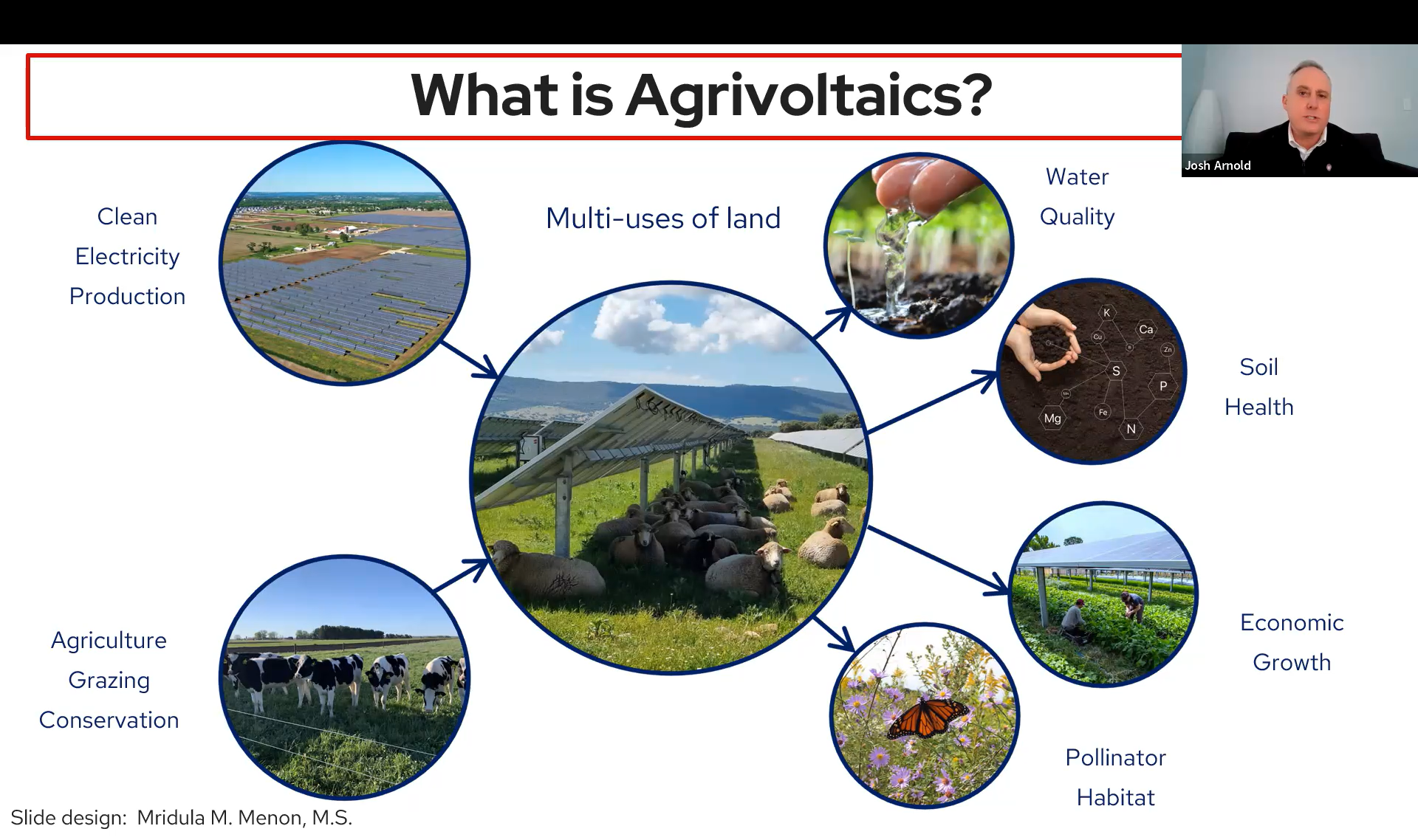
Monday, November 13, 2023
As part of our ‘‘WEC Mondays-Guest Speaker Series’’ we hosted Dr. Josh Arnold, Campus Energy Advisor for the Office of Sustainability at University of Wisconsin.
In Dr. Arnold’s presentation on ‘‘Agrivoltaics: Integrating Solar Electricity Production with Agriculture, Grazing and Native Habitats’’, Dr. Arnold highlighted:
- Agrivoltaics – Multiple uses of the same land for agriculture and energy production in such a way that we can produce clean electricity from solar panels while the practice of agriculture, grazing and conservation of natural habitats are in harmony with economic growth, soil health and water quality.
- There are 4 most commonly used solar configurations for Agrivoltaics. Fixed mount, single-axis trackers which can follow the sun during the day, vertical panels, elevated panels which is one of the best options for Agrivoltaics.
- Fixed mount or non-elevated fixed panels might be great for solar influx to the panels, for farming and agriculture it creates several problems such as minimum vertical and horizontal access to the land, and too much shading.
- Single-axis trackers provide more flexibility and control to the farmer. Single-axis trackers can be tilted and be made almost vertical so that farming equipment and machinery can be used more effectively.
- Elevated fixed tilt or elevated panels are the most resourceful yet the most expensive solar panels configuration there is. They provide maximum horizontal and vertical access and minimized shading which makes large animal grazing and agriculture in general possible.
- There are 5 keys that determine Agrivoltaics success. Climate – choosing the right soil and environment for agriculture to grow. Configurations – choosing the appropriate solar design and layout so that clean energy production can co-exist with agriculture, grazing and conservation of natural habitats. Crop Selection – choosing the right seeds, cultivation methods and design. Compatibility – the land that is selected for Agrivoltaics projects should offer enough flexibility for dual uses. Collaboration – communication between all stakeholders is essential in order for parties with different interests to align their goals for the benefit of Agrivoltaics success.
- Türkiye is about 5x the size of the state of Wisconsin, USA. In Türkiye, about 56,000,000 acres are currently used for agriculture. When it comes to solar capacity, Türkiye has about 20x as much solar capacity as Wisconsin – with both areas forecast for rapid increases in the next 5 years.
- Türkiye is the world’s top hazelnut producer and exporter. Integrating solar electricity production with agriculture would not only yield positive economic value but also help to realize Türkiye’s sustainability goals as well.
